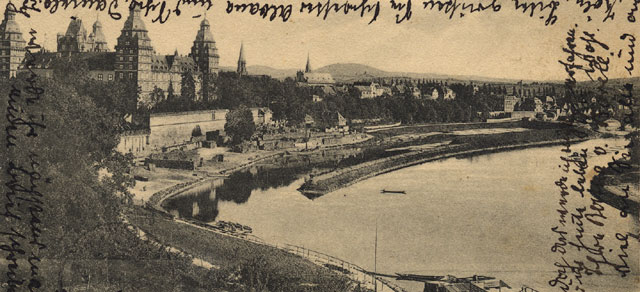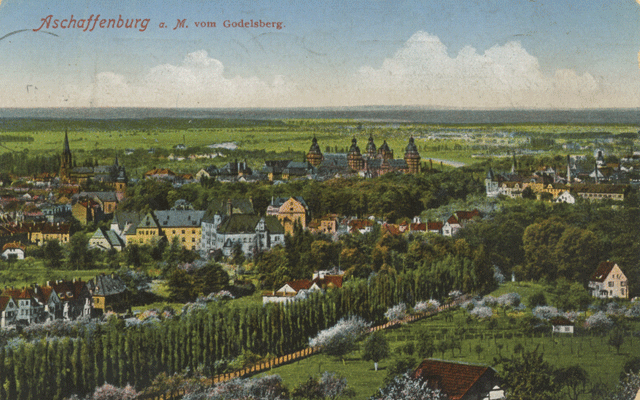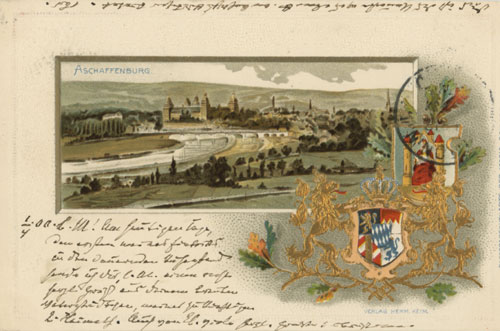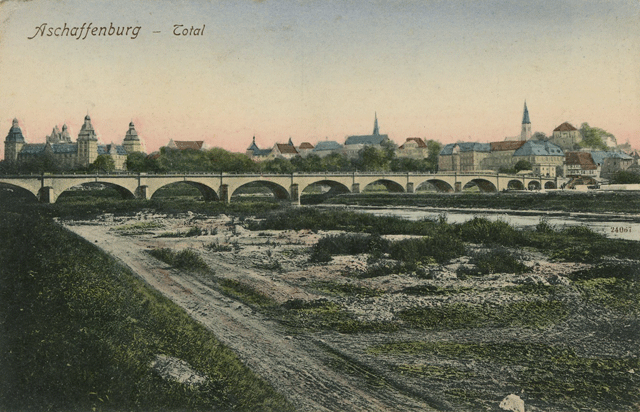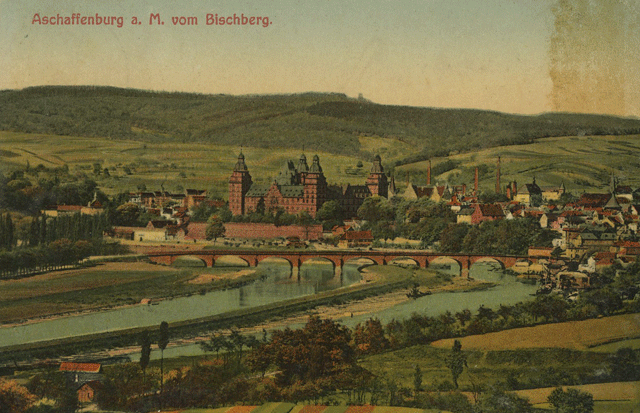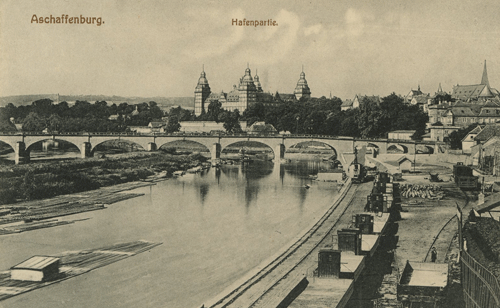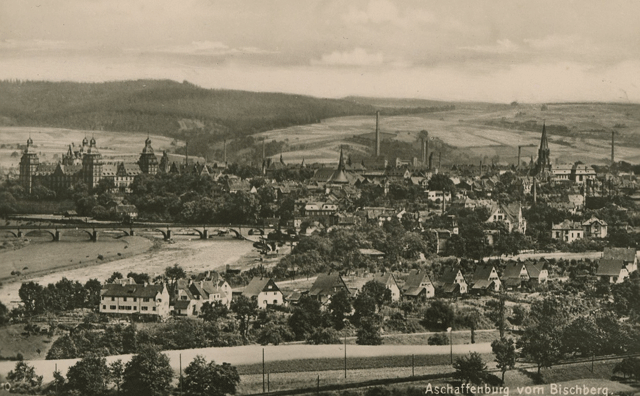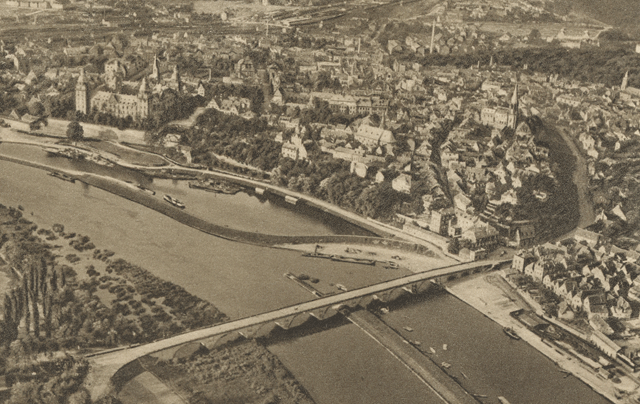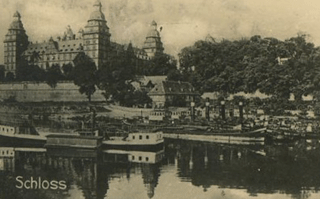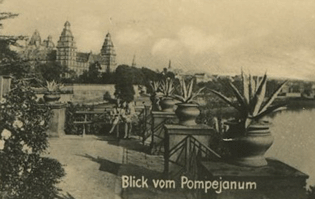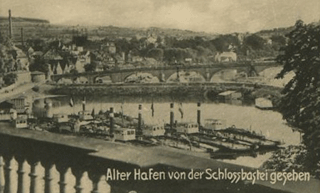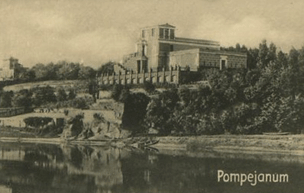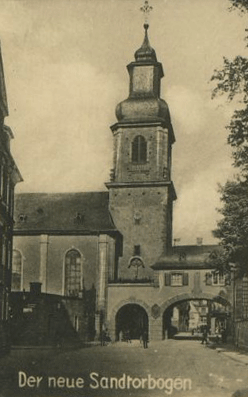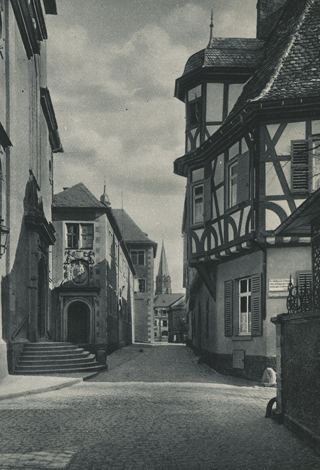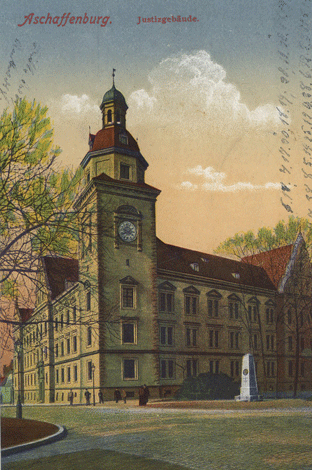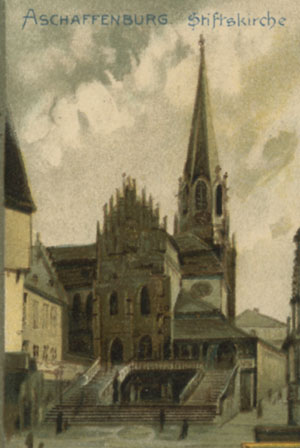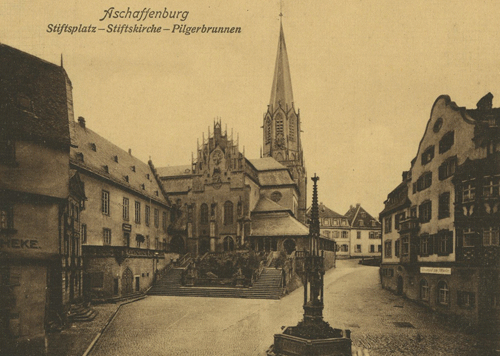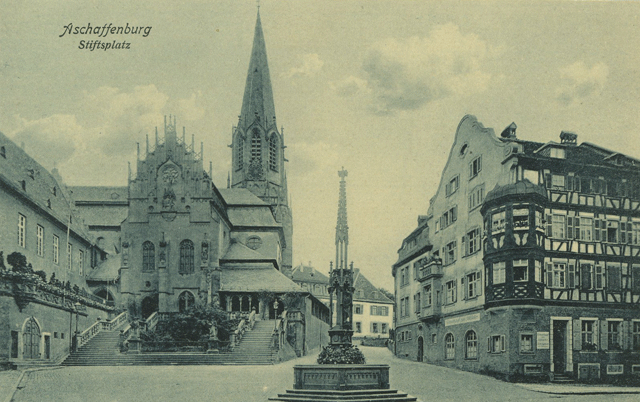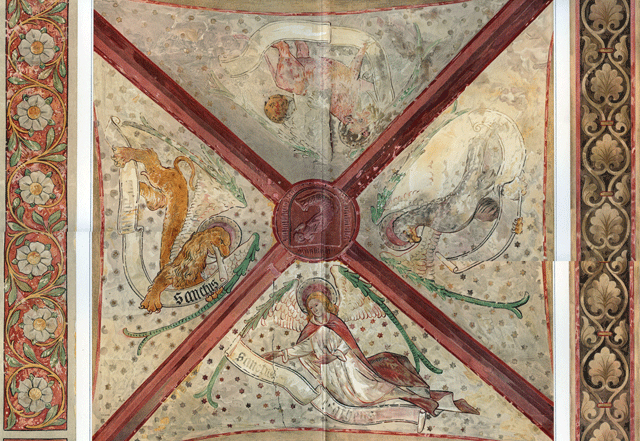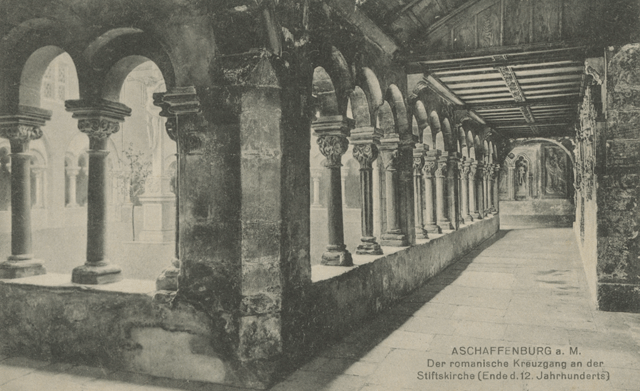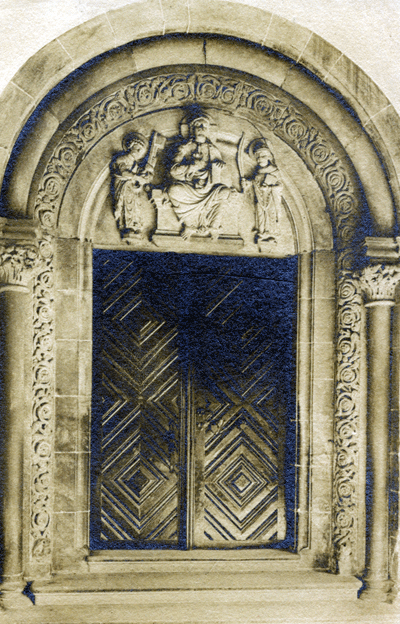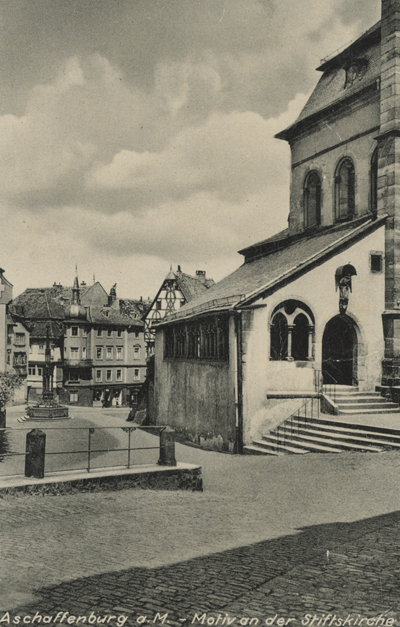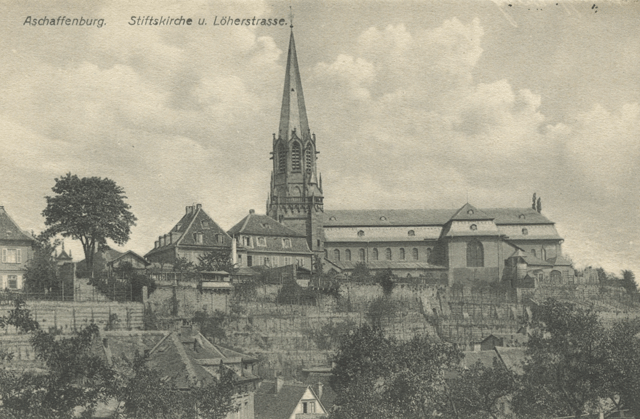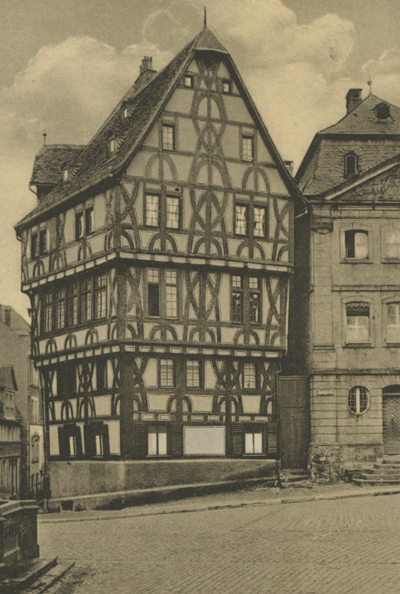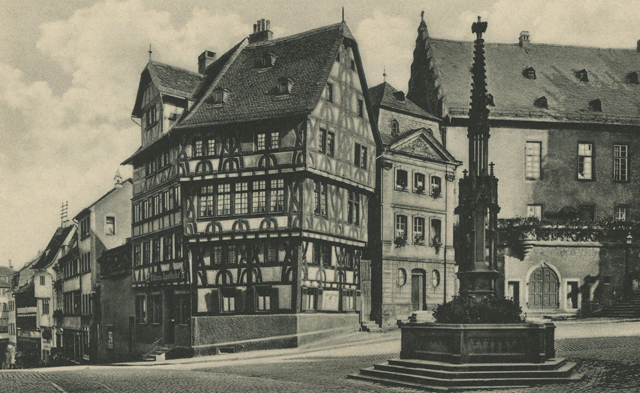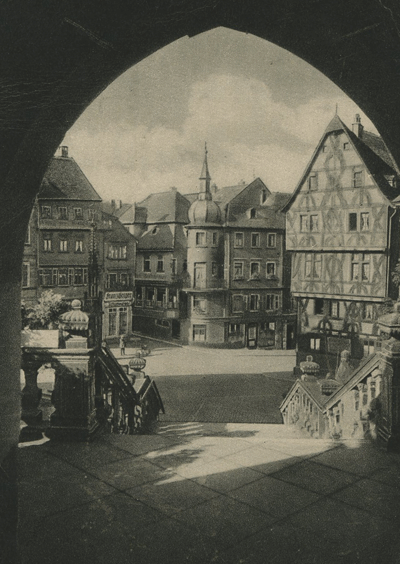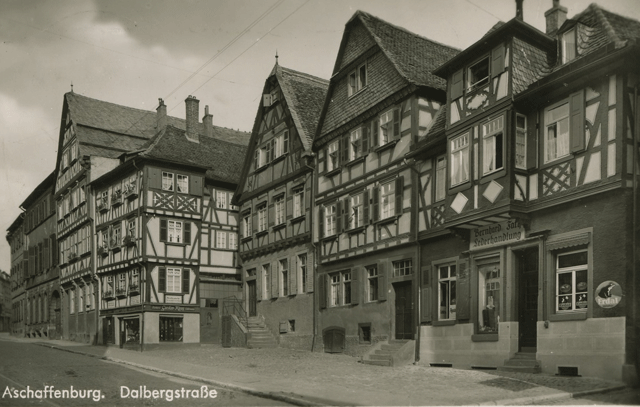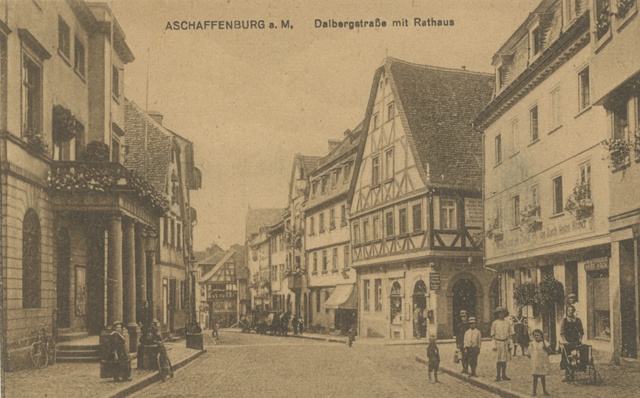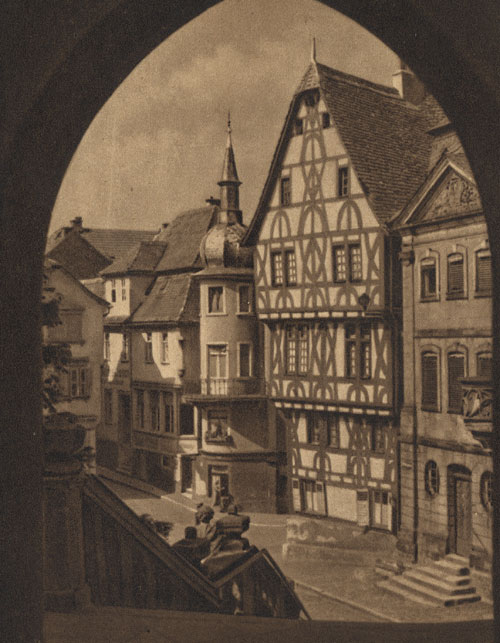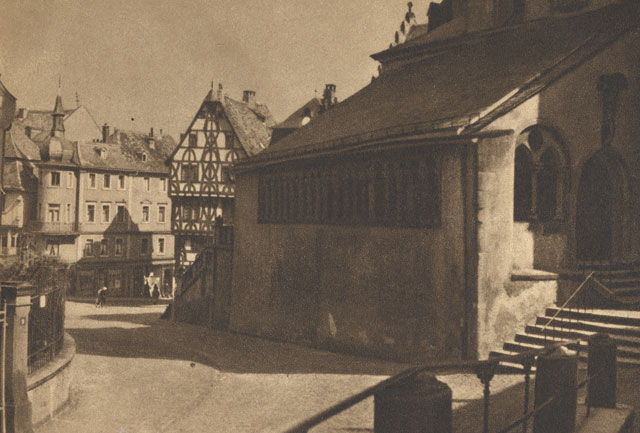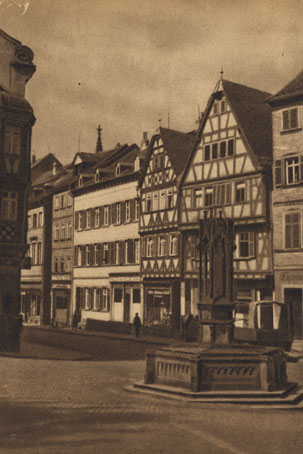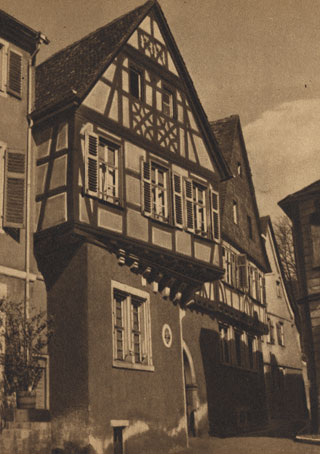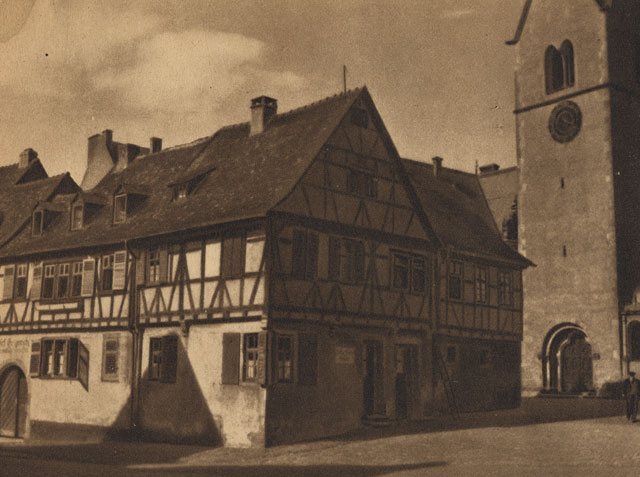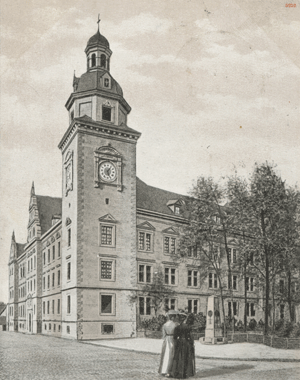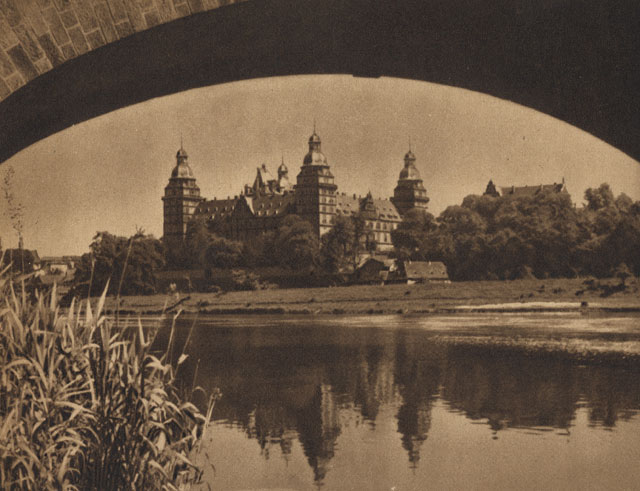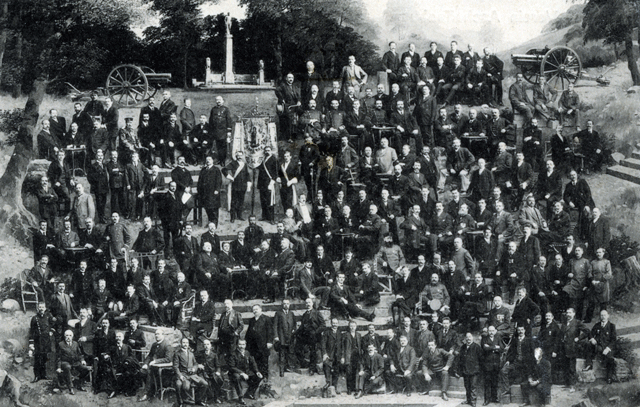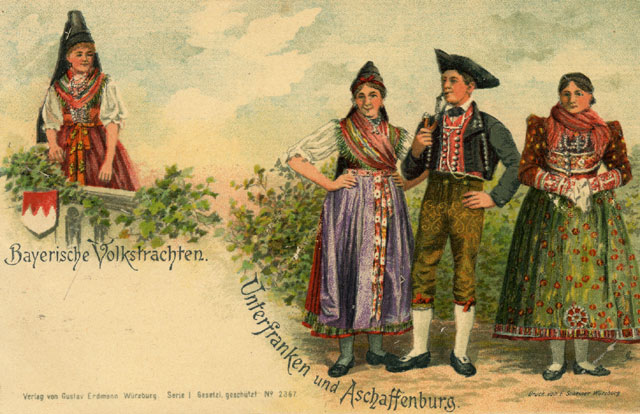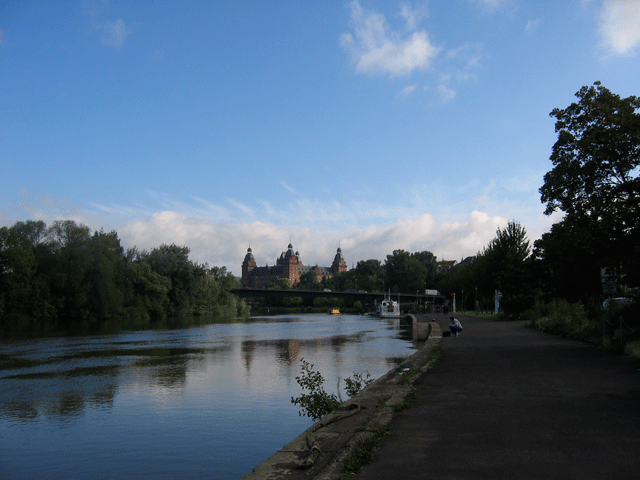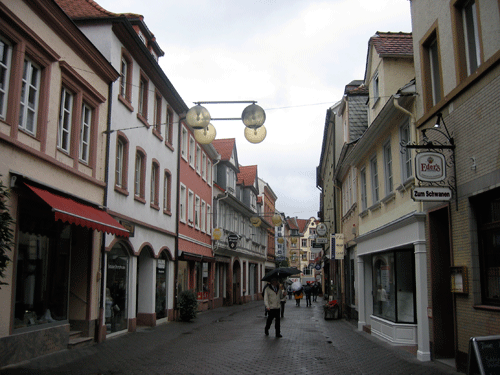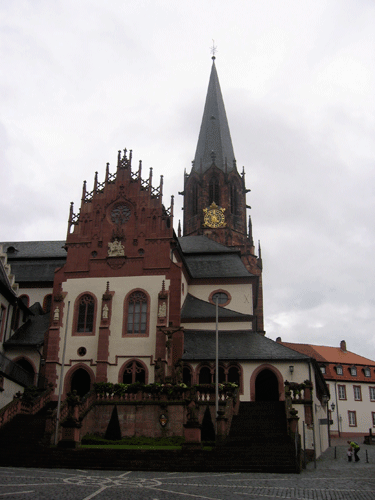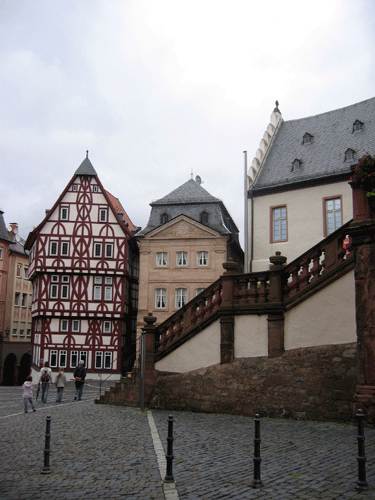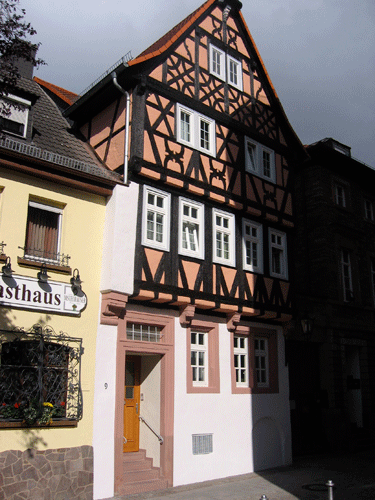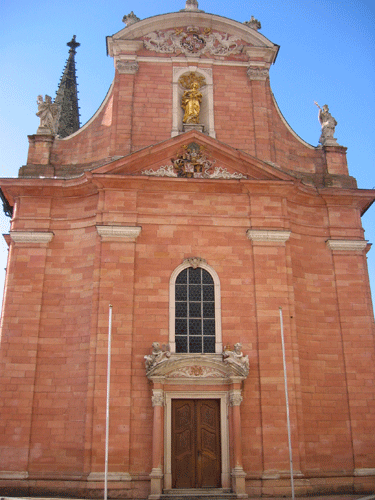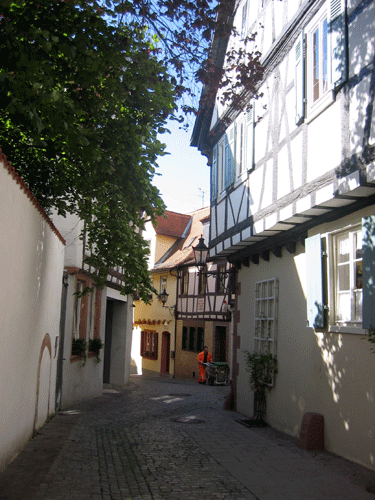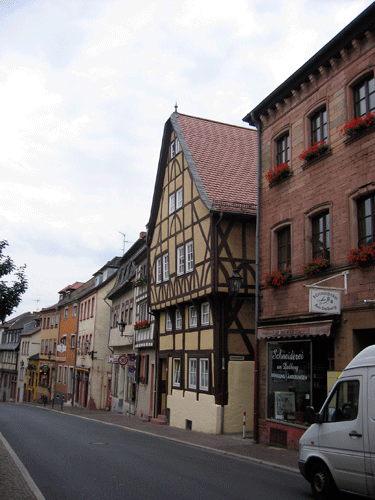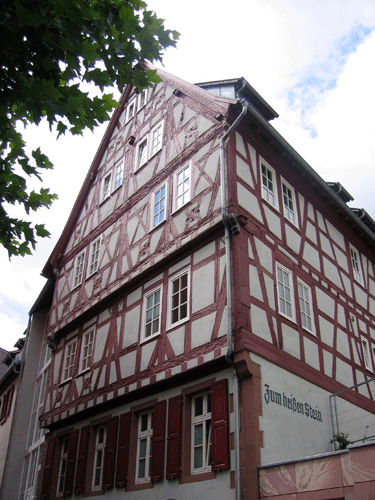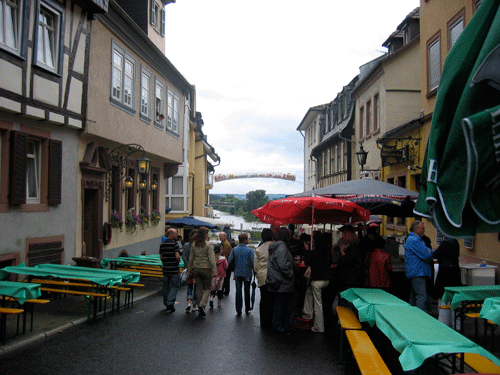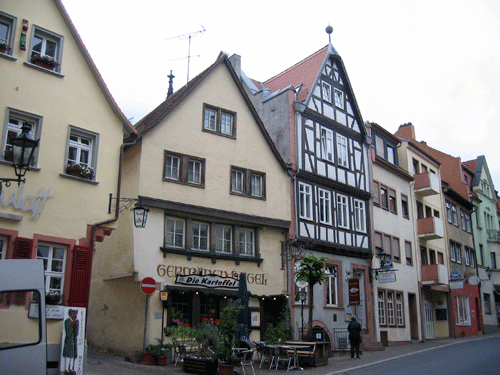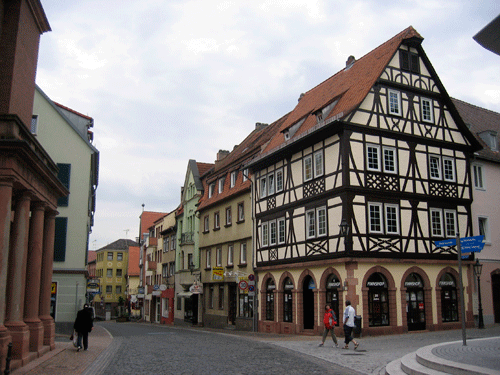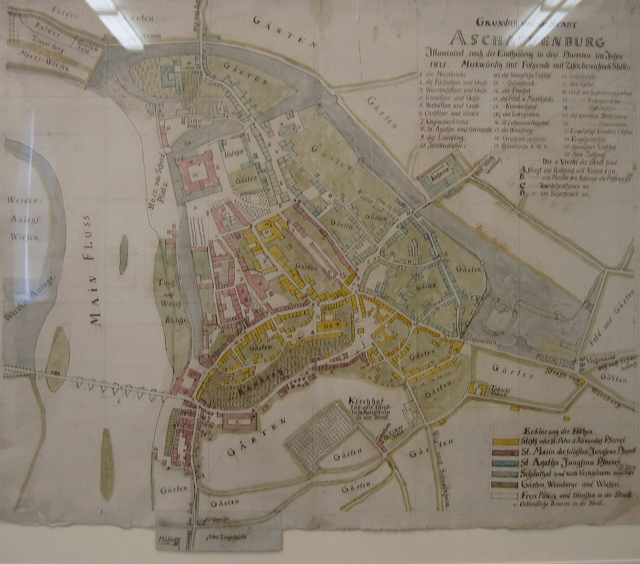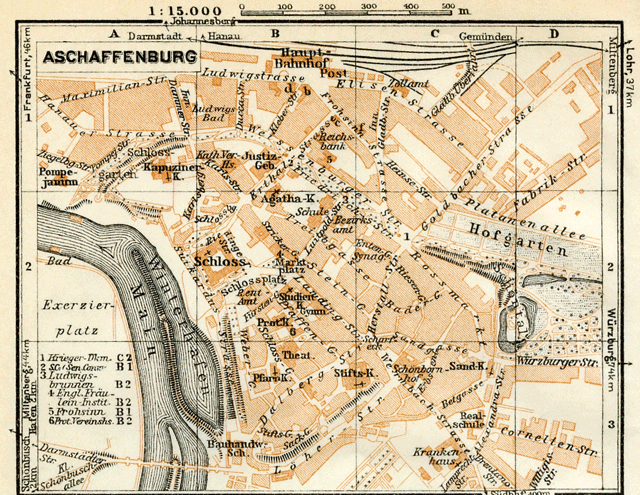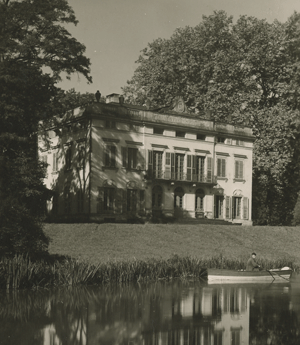|
Aschaffenburg History
In 1806 Aschaffenburgt was annexed to the grand-duchy of Frankfort.
In 1814 it was transferred to Bavaria to which it still belongs.
See Aschaffenburg
and Aschaffenburg
for more history.
Aschaffenburg was heavily bombed in a 10 day battle in March 1945. In trying to
determine why Aschaffenburg was bombed
I discovered that the United States
had a policy of strategic precision bombing that was intended to avoid civilian populations.
However, the United States Army Air Force bombed several cities in Germany including:
Aschaffenburg, Frankfurt, Berlin, Kassek, Pfozheim, Darmstadt,
Swinemuende, Leipzig, Mainz, Hamburg, Dresden and Wurzburg resulting in hundreds of
thousands of civilian deaths and the destruction of multiple cultural landmarks.
One of the most controversial bombing raids was the destruction of Dresden in February 1945
when it is estimated that more than 25,000 people died within a 14 hour period. Dresden was known as a cultural center and had no military value, it had been spared ealier during the war because
it was designated an "open city" (Cities, such as Paris, Rome and Florence, had such
designations
because of their
cultural value. They were more or less spared being bombed.)
I was not able to determine why Aschaffenburg was targeted. However it appears that the city was
strongly defended by the Germans.
"The fighting around Aschaffenburg was a very small part of
the mosaic that was World War II in March and April 1945."
The character of the fighting was such that it made an impression on
even those with a broad view of the war. Secretary of War Stimson made
this comment at his weekly news conference on 7 April 1945:
"There is a lesson with respect to fighting to the end in Aschaffenburg.
There Nazi fanatics used the visible threat of two hangings to compel
German solders and civilians to fight for a week. After a week of
fighting, during which the city was reduced to rubble and many Germans
lost their lives, the inevitable took place and the Nazi fanatics ran up
the white flag and surrendered to our veteran 45th Infantry Division."
From: THE BATTLE OF ASCHAFFENBURG:
AN EXAMPLE OF LATE WORLD WAR I1 URBAN COMBAT
IN EUROPE
A thesis presented to the Faculty of the U. S. Army Command and General Staff College In partial fulfillment of the requirements for the degree
MASTER OF MILITARY ART AND SCIENCE,
QUENTIN W. SCHILLARE. MAJ, USA B.S.. University of Connecticut, 1967 B.A.,
University of Connecticut. 1974 M.B.A., University of Connecticut, 1977, Fort Leavenworth, Kansas 1989
Note: I found his thesis on line but for some reason couldn't get back to it.
In September Dave Kerr emailed me a link to the site that worked for a while.
Terry Calhoun informed me in November 2010 that the link I had was broken again.
The Battle of Aschaffenburg was working April 2011.
Major Schillare made the following points about the strategic significance of Aschaffenberg:
- A transportation hub
- An industrial center: coal, stone, cellulose, paper, furniture, chemicals and breweries
- A market town
Major Schillare estimates that about 70% of the city was destroyed and about 60% of the population
(including military) were killed.
July 2008, Jack Power wrote:
"I was stationed in Aschaffenburg 1967-1969. Great city.
It was my understanding that the city was destroyed during WWII by three US army
tanks placed atop "Three Cross Hill" in or near Schweinheim.
The reason for destruction, as I came to understand it, was uniforms were manufactured there.
Ate and drank in Schalpessipple (sp?) near Schloss Johannisburg.
Also spent much time at a guesthaus in Goldbach."
In January 2011 Utah Rogers wrote
"You may be aware that Gen Patton's son-in Law (Captain Waters)
had been captured by the Germans and so much of the battles
in the area was brought about by the General wanting to free his
Son-in-Law. Lot of denials to that story!"
Note:
John K. Walters married Patton's daughter Beatrice in 1934. During WWII he was
captured in Tunisia and sent to a
German POW camp at Hammelburg not far from Aschaffenburg.
Patton ordered a Task Force under Capt Abraham Baum
to liberate the camp. The mission was a failure, 32 men were killed, 35 made it back to the
Allied Lines and the rest were taken prisoner.
Waters was wounded during the
liberation attempt.
See Google Books City Fights: Selected histories of urban combat from World War II to Vietnam By John F. Antal
See Task Force Baum
In March 2011 Anthony R. Varda wrote:
"My father, then Captain John Varda, was in the military government in Aschaffenburg
during WWII. You asked why the Allies destroyed the town. As my father explained
it years ago, it was relatively simple. Patton's tanks went through
Aschaffenburg at night with little resistance, putting it behind allied lines.
There was an SS detachment in barracks on the outskirts of Aschaffenburg at
the time, but they missed Paton's tanks as the tanks blew through the town,
well ahead of the American troops. The next morning, the mayor wanted to
surrender, but the SS were having nothing to do with any surrender.
The SS hung mayor from a lamp pole and started fighting the troops
following behind the American tanks. The troops retreated back from the town.
At this stage in the war, no one wanted to be the last casualty,
and the supply lines had more than enough munitions to allow for
endless bombardment of the town, from a safe distance. So that is
what they did. My father was not entirely pleased because
it made for not much left to govern, and a lot of problems to
deal with, but he saw it as a reasonable way to approach the intransigent enemy."
The magazine WWII HISTORY, January 2011, contains an article Ten Days at Aschaffenburg
by
Christopher Miskimon which describes the fighting at Aschaffenburg in March 1945.
Miskimon states that Aschaffenburg was a "major hub for water and rail transport,
and the city also
boasted extensive industry" in addition to having a "substantial military presence"
as the "home of the 106th Infinity Regiment".
However, he does not specifically state why Aschaffenburg was targeted.
He does mention the "raid" of the POW camp at Hammelburg under Captain Abraham Baum.
"Baum's force reached the camp where there were far too many POWs to
evacuate, tried to fight its way back
with a portion of them, was essentially hunted down and all its men killed or captured."
Miskimon says:
"The fate of Aschaffenburg was the destruction of some 70 percent of
the city, lost in a
determined by ultimately wasted struggle. Of 8,500 defenders 1,600 were wounded or killed
and 3,500 more became prisoners of war. The Americas suffered around 300
wounded and 20 killed."
On April 9, 2011 Wayne Lutz who was stationed in Asscahffenburg for 6 years and married a local girl
wrote in regards to 3 Cross Hill:
"In my time, the story was that Patton's army sat on that hill, which overlooks
the Schloss across the river, and sent three officers down to the castle with a surrender demand.
The three officers never returned, having been killed, so the US destroyed the castle and much of the city.
The three crosses were then erected in memory of those officers.
That is not true, and neither is Mr. Power's version. I got the true story from the Aschaffenburg
city hall department of historical records.
First, the hill is called "Erbig Berg." It is directly across the Main river from the Schloss Johannisburg
and provides a commanding view of the entire city, which made it a strategic high ground, and the best
place from which to both observe the city and to launch a frontal assault. Major (Now Lt. Colonel, Retired)
Quentin Schillere's magnificent Master's Theses, The Battle of Aschaffenburg," talks about the Erbig in
Chapter 2:
"The area from the river east through Hill 240 (the Judenberg) and Hill 285 (the Erbig)
to Schweinheim offers the best approach into the town. It is flat near the river and, although steep
on the saddle between Hill 188 (the Bischberg) to Hill 285, it is open agricultural land and
offers excellent observation and fields of fires........The Bischberg and the Erbig are the key
terrain in this sector, occupation of them provides observation of the city and the movement
corridors into the area."
So, the Erbig is the hill that we American GI's referred to as "3 Cross Hill" in our Cold-War era.
The truth about the three crosses is this, sent to me by Matthias Klotz, Archivamtsinspektor, Stadt-und Stiftsarchiv
Aschaffenburg, on July 30, 2009. Herr Klotz wrote:
"The three crosses were built in 1948, and they should remember three things:
-
memorial for the victims of the world war II
- gratitude for the men who came back from world war II
- reminder on the religious passion-performances in Schweinheim
The hill on which the three crosses are standing is called "Erbig". The crosses were
renewed in 1973 and 2000. In 1975 there was one cross destroyed and renewed.""
|
